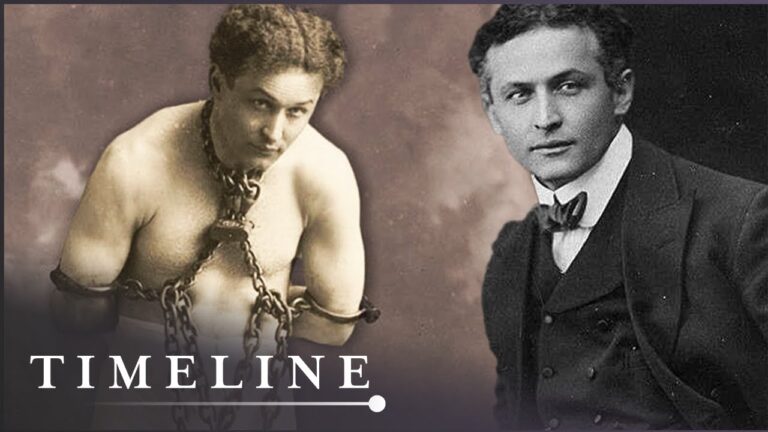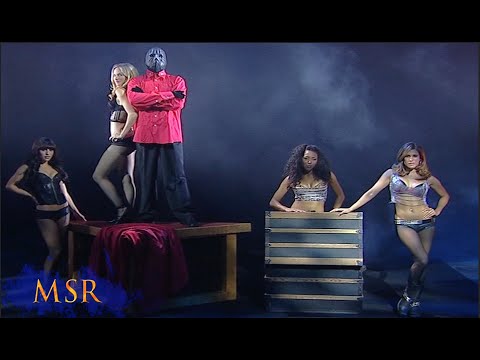The Evolution of Escape Acts: How Contemporary Artists are Redefining Houdini’s Techniques
Harry Houdini transformed simple escape tricks into dramatic performances that captivated audiences worldwide. His legendary acts and techniques still influence performers today, from stage magicians to modern escape room designers.
Modern escape artists have built upon Houdini’s foundation by incorporating new technology, psychology, and immersive elements while staying true to the core principles of misdirection and skilled manipulation.
You can see this evolution in how contemporary performers blend traditional escapology with multimedia presentations, audience participation, and advanced security systems.
The art of escape has grown beyond basic handcuff and straightjacket demonstrations. Today’s performers challenge themselves with increasingly complex challenges that test both physical and mental limits. They create suspense through elaborate setups and real-time problem-solving that keeps audiences on the edge of their seats.
Houdini’s Original Techniques

Harry Houdini mastered a unique blend of physical skill, psychological manipulation, and technical expertise to create seemingly impossible escapes that captivated audiences worldwide.
The Fundamentals of Houdini’s Escape Acts
You can trace Houdini’s basic methods to his deep knowledge of lock picking and innovative techniques that combined physical prowess with technical mastery. His preparation always started with meticulous examination of restraints.
Hidden lock picks were essential tools, often concealed in his hair, between his toes, or in the hem of his clothing. Many picks were as thin as a postage stamp.
The ability to dislocate thumbs and control breathing became crucial skills in Houdini’s repertoire. These physical abilities let him create slack in restraints and squeeze through tight spaces.
Iconic Escapes and Their Cultural Impact
The Chinese Water Torture Cell stood as Houdini’s most dangerous feat. Suspended upside-down in a glass tank of water, his dramatic escapes left audiences breathless.
His groundbreaking methods for escaping handcuffs involved careful study of lock mechanisms. Each successful performance reinforced his reputation as “The Handcuff King.”
The Milk Can Escape demonstrated his marketing genius. By presenting ordinary objects in extraordinary ways, you can see how he transformed simple props into legendary spectacles.
The Core Principles of Classic Escape Artistry
Key Elements of Houdini’s Method:
- Misdirection through dramatic presentation
- Perfect timing of movements
- Strategic use of hidden tools
- Exceptional physical conditioning
Your understanding of Houdini’s core approach must include his insistence on physical fitness. Daily exercise and flexibility training enabled his most challenging escapes.
His psychological manipulation techniques played an equally important role. By building tension and controlling audience expectations, he amplified the impact of each performance.
Technological Innovations in Modern Escape Acts

Modern escape artists blend classic techniques with cutting-edge technology to create more complex and visually stunning performances. Digital systems, advanced locking mechanisms, and automated effects have transformed the art of escape.
The Integration of Digital Technology
Electronic timing systems now add precise countdowns to escape performances, creating extra tension for audiences.
You’ll see artists using RFID-enabled locks that can be monitored in real-time, displaying the escape progress on large screens.
Smart restraints incorporate biometric sensors that measure the performer’s vital signs during dangerous stunts. This data appears on displays, letting you track heart rate and oxygen levels as the escape unfolds.
Live streaming cameras give you multiple viewing angles of the performance, revealing details that would be impossible to see from a traditional theater seat.
Advances in Lock-Picking and Restraint Mechanisms
Modern escape artists work with custom-designed magnetic locks and sophisticated electronic security systems. These devices require new skills beyond traditional lock manipulation techniques.
3D-printed restraints create unique challenges that change with each performance. You might see an artist escape from handcuffs with embedded microprocessors that randomly alter their release mechanisms.
Hydraulic restraint systems add physical resistance that increases over time, making the escape progressively harder as seconds tick by.
The Role of Special Effects and Automation
Computer-controlled staging elements create dynamic environments that shift during the performance. Automated platforms can submerge, rotate, or elevate while the artist works to break free.
LED lighting systems sync with the escape progression, intensifying as critical moments approach. Smoke effects and projected visuals combine with motion sensors to react to the performer’s movements.
Robotic elements add unpredictable challenges, forcing artists to adapt their techniques mid-performance. These systems can adjust temperature, apply pressure, or move restraints based on pre-programmed sequences.
Enhanced Safety Measures

Modern escape artists use advanced safety equipment and strict protocols that go far beyond what was available in Houdini’s era. These improvements protect performers while maintaining the thrill of dangerous stunts.
Modern Safety Protocols and Equipment
You’ll find escape artists now using specialized quick-release mechanisms hidden within their restraints. Key safety features include:
- Backup release systems in water tanks
- Emergency oxygen supplies
- Break-away points in chains and ropes
- Hidden communication devices with safety teams
Professional escape artists work with certified rigging experts to test all equipment before each performance. Regular safety inspections and equipment maintenance schedules are now standard practice.
Balancing Risk and Safety in Contemporary Performances
Your perception of danger needs to remain high while watching escape acts, even with enhanced safety measures.
Artists create this tension through careful staging and timing.
Modern performers incorporate scientifically plausible feats that look dangerous but have built-in safeguards. The real skill lies in making safe escapes appear risky.
Teams of spotters stay ready to intervene, though they remain hidden from audience view. This creates a safety net without diminishing the act’s impact.
Case Studies of Safety Innovations in Recent Acts
The water torture cell, a classic escape, now features emergency drainage systems and reinforced glass tanks. Modern performers can trigger these systems without the audience noticing.
Death-defying stunts still thrill audiences, but performers now use advanced harness systems and impact-absorbing materials.
Professional escape artists work closely with engineers to develop new safety technologies. Recent innovations include:
- Smart restraints that monitor vital signs
- Automated emergency release mechanisms
- High-strength materials that appear traditional
- Real-time monitoring systems
Contemporary Theatrical Elements
Modern escape artists blend drama, narrative, and audience participation to create immersive performances that go beyond simple demonstrations of skill. These performances transform technical feats into memorable theatrical experiences.
The Influence of Modern Theater on Escape Acts
Today’s escape acts incorporate sophisticated lighting design, music, and staging elements.
You’ll notice artists using LED screens to project close-up views of lock manipulation. Fog machines and strategic spotlights create suspense during underwater escapes.
Professional escape artists now work with theatrical directors to perfect their timing and movement. The combination of physical prowess and technical mastery shapes each performance into a polished production.
Stage design has evolved to include multiple performance areas, allowing for seamless transitions between escape sequences. Artists use these spaces to build tension through calculated pacing.
Use of Storytelling and Character Development
Modern performers craft distinct personas that resonate with audiences.
Each escape sequence now connects to a larger narrative arc. Artists weave personal stories or historical events into their acts, giving context to their demonstrations.
Props and costumes support these character-driven performances. An artist might use period-appropriate restraints or incorporate meaningful personal items into their escapes.
Audience Engagement and Interactive Elements
Contemporary escape artists invite spectators to examine props and restraints before performances.
You can often volunteer to secure locks or verify the authenticity of constraints.
Social media integration allows audiences to follow artists’ preparation processes and training routines. Many performers live-stream practice sessions or share behind-the-scenes content.
Digital technology enables real-time audience participation through mobile apps and voting systems. These tools let you influence escape sequences or choose challenge parameters.
Artists now incorporate virtual reality elements, allowing remote viewers to experience escapes from multiple angles. This technology creates new possibilities for audience involvement.
Balancing Historical Authenticity With Modern Spectacle
Today’s escape artists walk a fine line between preserving magic’s rich heritage and meeting modern audience expectations for jaw-dropping visual effects. The integration of new technology and theatrical elements has created fresh opportunities to showcase classic illusions.
Respecting Houdini’s Legacy in Modern Performances
Houdini’s revolutionary techniques set standards that still influence performers today.
When you watch contemporary shows, you’ll notice artists maintaining core elements like visible restraints and real-time escape challenges.
Modern performers often incorporate Houdini’s signature moves – the strait jacket escape, milk can escape, and water torture cell – while adding their own twists. These additions make the acts fresh without losing their historical essence.
Many artists now include educational segments in their shows, teaching audiences about magic history and Houdini’s contributions. This approach helps preserve the art form’s legacy while creating deeper audience engagement.
Examples of Successful Modern Adaptations
Contemporary escape artists have updated classic illusions with dramatic new elements.
You’ll see performers like David Blaine incorporating underwater stays that extend far beyond Houdini’s original time limits.
LED screens and projection mapping now enhance visibility for large audiences, letting you witness every detail of the escape. These technological additions maintain the act’s authenticity while improving the viewing experience.
Social media integration allows you to follow escape preparations and behind-the-scenes moments, creating extended engagement beyond the live performance.
Challenges in Maintaining Authenticity
The pressure to create viral moments can sometimes overshadow traditional escape artistry.
You might notice some performers focusing more on shock value than technical skill.
Budget constraints often force artists to choose between historical accuracy and modern expectations. Authentic period restraints and equipment can be expensive to source and maintain.
The need for constant innovation must be balanced against preserving fundamental techniques. While new methods emerge, the core principles of escape artistry – timing, dexterity, and misdirection – remain essential to maintaining the art form’s integrity.
Case Studies of Modern Escape Artists
Modern escape artists push boundaries with innovative twists on classic techniques while paying homage to Houdini’s fundamental principles. They combine traditional skills with new technology and psychological elements.
Profiles of Leading Contemporary Performers
David Copperfield revolutionized escape artistry by incorporating grand theatrical elements into his acts. His famous straightjacket escape while suspended from a burning rope set new standards for dramatic tension.
Dorothy Dietrich broke gender barriers as the first woman to perform the bullet catch. She mastered the dangerous milk can escape that made Houdini famous.
Steve Santini specializes in extreme restraint escapes. His signature move involves breaking free from multiple layers of chains, locks, and handcuffs while submerged underwater.
Notable Acts and Their Innovations
Jonathan Goodwin introduced psychological elements by performing blindfolded escapes from industrial machinery. His acts test both physical and mental limits.
Modern performers enhance classic acts with technology:
- Infrared cameras showing the escape in real-time
- Live biometric displays of heart rate and oxygen levels
- Underwater communication systems for safety
- Digital countdown timers adding urgency
Lessons Learned from Modern Adaptations
You can see how contemporary artists emphasize transparency in their methods. Many perform in well-lit conditions to prove there’s no hidden assistance.
Risk management has evolved significantly. Modern escape artists use backup safety systems and emergency response teams.
The focus has shifted toward creating personal connections. Artists share their preparation process and mental strategies with audiences through social media and behind-the-scenes content.
Training now includes extensive study of human anatomy and physiology. This knowledge helps performers understand their physical limitations and execute safer escapes.






